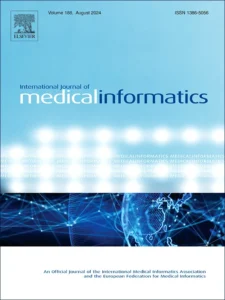Utilizing artificial intelligence and medical experts to identify predictors for common diagnoses in dyspneic adults: A cross-sectional study of consecutive emergency department patients from Southern Sweden

Objective Half of all adult emergency department (ED) visits with a complaint of dyspnea involve acute heart failure (AHF), exacerbation of chronic obstructive pulmonary disease (eCOPD), or pneumonia, which are often misdiagnosed. We aimed to create an artificial intelligence (AI) diagnostic decision support tool to detect patients with AHF, eCOPD, and pneumonia among dyspneic adults at the beginning of their ED visit.
Methods In this cross-sectional study, we included all ED visits of patients 18 years or older with dyspnea at two regional Swedish EDs 07/01/2017–12/31/2019. In-hospital or ED discharge notes were used as outcome labels, with a subset manually reviewed by experts. We analyzed data from a complete regional healthcare system, along with socioeconomic factors, using Hierarchical Attention Networks. Each patient displayed a unique set of variables important for diagnosing dyspnea. All patients’ unique variable sets were aggregated into a variable list. The top 100, 50, and 20 variables were tested in a simpler CatBoost model. Finally, performance was compared after adding medical expertise to the AI model.
Results We included 10,869 visits, with 15.1% having AHF, 13.6% eCOPD, and 13.1% pneumonia. The median number of variables per unique ED visit was 187 (IQR 111–307). Aggregating the unique sets of variables resulted in a cohort list of 2,064 variables. The median micro AUROC was 87.8% (2.5–97.5 percentile; 86.4–89.3%). Age, ECGs, previous diagnoses, and medication were considered important by the AI model, while sex, vital signs, and socioeconomic factors were deemed almost non-predictive. Using the top 20 AI-selected variables, the AUROC was 86.6% (85.1–88.1%). Adding human medical expertise did not significantly change the AUROC.
Conclusion Based on the analysis of a high-dimensional dataset, we designed a lightweight 20-variable machine learning model that can early and effectively diagnose AHF, eCOPD, and pneumonia among ED patients with dyspnea.
Ellen T. Heyman, Awais Ashfaq, Ulf Ekelund, Mattias Ohlsson, Jonas Björk, Alexander Marcel Schubert, Markus Lingman, Ardavan M. Khoshnood
2025
International Journal of Medical Informatics, 202(October 2025):105969
